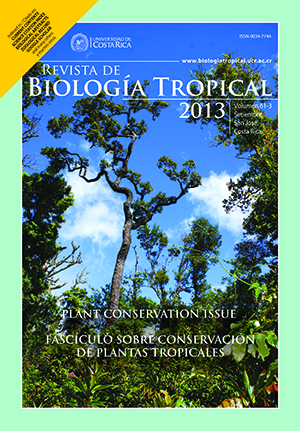Abstract
Butterflies constitute an useful group to investigate biodiversity patterns in specific geographic areas. The aim of this study was to describe the altitudinal patterns distribution and to recognize the main grouping factors of these families. We conducted a comparative study between the butterfly fauna (Papilionidae, Pieridae and Nymphalidae) of five Mexican mountain ranges (Sierra de Manantlán, Sierra de Atoyac de Álvarez, Loxicha Region, Teocelo-Xalapa and Sierra de Juárez), that included 34 sites of altitudinal ranges from 100 to 2 820m. Data was obtained from the Zoology Museum of the National University of Mexico, and comprised more than 60 000 butterfly records of 398 taxa (subspecies level) proceeding during the last 35 years. Fauna similarity between localities were analyzed using a cluster analysis by Sorensen similarity coefficient. Species richness showed a general tendency to decrease with altitude; the main difference was found between the locality with higher altitude and the rest of the sites. The principal factors affecting the identified clusters followed this order: the location in Pacific or Atlantic slope, and location on a particular mountain range. Three altitudinal levels (low elevations, up to 1 200m; intermediate elevations, from 1 200 to 1 800m; and high elevations, from 1 800 to 2 500m) were described in accordance to their main characteristic taxa. While Neartic elements were common in the highest altitudinal floor, Neotropical taxa were common in the lowest one. It was more difficult to characterize the intermediate level in which a high number of localities were clustered; this intermediate level was characterized by the presence of some endemic species. The results suggest that historical factors are preeminent in butterfly fauna composition in these areas. Future studies may include other Mexican mountain areas to obtain more information on the different factors (latitude, altitude, slope) influencing biodiversity patterns.Comments
Downloads
Download data is not yet available.






